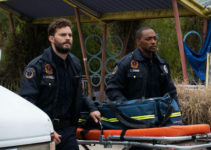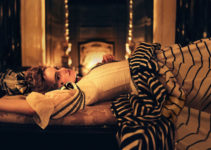“By the end things became quite complicated,” reflects Paul McCartney. “But at the beginning, it was quite simple.” Ron Howard’s documentary ‘The Beatles: Eight Days A Week’ is an enjoyable look back at the Fab Four’s transformation into a cultural phenomenon. By focusing on the touring footage, Howard reveals how talented they were on stage as musicians. The screaming fans mostly comprised of girls hark back to an earlier time when it was a fun journey for John, Paul, George and Ringo. It is the archival footage of their grueling concert schedule, interviews and crazed fans that led to their eventual burnout on the road. They find refuge at Abbey Road Studios where they create their most pioneering works such as “Sgt. Pepper’s Lonely Hearts Club Band,” considered the greatest album ever made by Rolling Stone.
Howard takes us back to their humble beginnings in Liverpool performing at The Cavern Club and Hamburg gigs at the decadent Reeperbahn. We’ve seen their story told countless times but Howard gives it a fresh take. Instead of just playing a few bars of one of their songs, we get to enjoy the whole experience. It’s the energy, the stage presence and the pandemonium in the audience that is guaranteed to put a smile on your face. The main focus of the touring footage is 1962 to 1966. By late 1963, The Beatles were already a household name in the United Kingdom. On the heels of hits like “I Want to Hold Your Hand,” it is their performance on The Ed Sullivan Show on February 9, 1964 that kick-starts the Beatlemania phenomenon in America.
When they first arrive to the U.S., they appear happy and upbeat at the press conferences. Wearing matching suits thanks to their band manager Brian Epstein, they fire back at the reporter’s inane questions with cheeky one-liners. When American journalist Larry Kane is invited on tour with The Beatles, he has no idea what is in store for him. When 7,000 people rush the stage, he recalls “240 kids wound up in the hospital. No one was prepared for this.” The documentary captures the 1965 concert at Shea Stadium with 55, 600 screaming fans in attendance. Because of the inadequate sound system and the loud screams from the crowd, the Beatles are unsure if any of their songs were heard at all. As the film demonstrates, the music was piped through the stadium’s PA speakers making it have a tinny sound like thousands of transistor radios.
Surviving members Paul McCartney and Ringo Starr give their personal take on the madness in interviews. We find out that they relied on each other to get through their crazy touring schedule. In those days, bands made most of their money through live performances. The Beatles’ first official North American Tour in 1964 would change the concert industry forever. They played a ground-breaking 32 shows in 24 cities in just 33 days. They would walk away with $1 million which in today’s dollars comes to about $7.5 million. Celebrity fans such as Whoopi Goldberg and Sigourney Weaver reminisce about contributing to the screams at the concerts. The film also touches on the assassination of President Kennedy, segregation in the South and the Vietnam War. They made history by refusing to play at the Gator Bowl in Jacksonville, Florida if the audience was segregated. Lennon said, “We never play to segregated audiences and we aren’t going to start now. “
It was in 1966 when the Beatles became disillusioned with the price of fame. The band gets accused of snubbing Imelda Marcos’ dinner invitation in the Philippines and Lennon’s out-of-context statement about Christianity had a major backlash in the Bible Belt. Radio station DJ’s were telling fans to burn their Beatles’ albums and boycott their shows. Fan hysteria became so dangerous that the Fab Four never felt safe in hotels or at live shows. Their final concert was on August 29, 1966 at Candlestck Park. As they get hauled off in a Loomis armored car, the band decides to give up touring. Howard wisely focuses on their productive studio work where the band is able to use Abbey Road as a safe haven for their creativity. Through cigarette smoke rising from still photography, we witness magic taking place as they lay down tracks for their astonishing psychedelic period. Howard’s long-awaited documentary, ‘The Beatles: Eight Days a Week’ is a fun ride down memory lane and should not be missed by Beatles fans.


